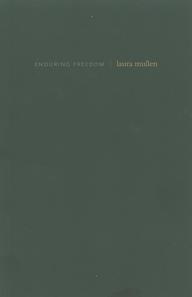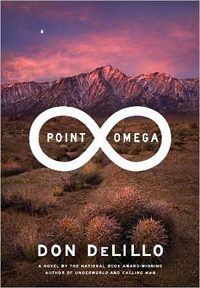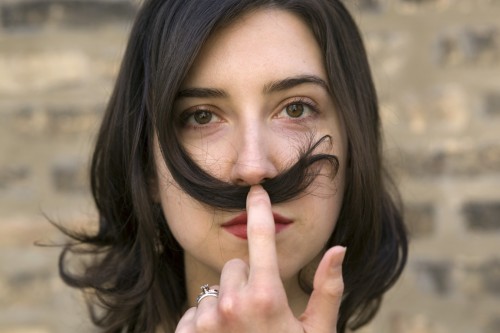Elaborate Solutions to Problems that Maybe Only I Perceive as Problems, Part 1
Why don’t all our turn signals blink at the same rate?
That moment when I am waiting to turn left at the intersection and so are two cars in front of mine and three cars behind and all our signals are flaring and dying. I have terrible astigmatism, which smears the light across my vision. This effect is exaggerated by my dirty windshield. My light blinks and your light blinks and this light blinks and my light blinks and this light blinks and your light blinks. 1, 2, 3, 1, 3, 2, 3, 1, 2. What I mean to say is that the order changes. The relationship shifts. Some lights are faster than others. Say yours is faster than mine. So there is a time where we blink in alternating shifts. And then there is a time where we are blinking together. And then we slowly shift apart again, back to the time where we are blinking separately. This makes me feel a little ill.
It’s bad enough they blink at different times. They should at least keep the same rhythm. If we knew, at the intersection, that mine would go and then yours would go and then hers would go and then his and then we would do it all again then I could prepare myself for the sensation. What I can’t live with is what we have now, where everyone is blinking to a similar but very slightly different rhythm, so I never know what’s coming next, or where, only that it’s coming.
But it would be best if all our signals could signal at once. “Left,” they would say. “Left, left, left.” And then these others, at the same time, on the same beats, would say “Right, right, right, right.” The ideal tempo is something for the Congress to determine. What we can do is we can build a little device into every car that receives a signal from say a network of radio antennae. Or possibly this could be piggybacked through cellular towers, GPS satellite signals, or etc. What the signal will say is, “Now, now, now, now,” forever. What the device in our cars will do is it will tell our signals when to flare. “Now, now, now, now,” they will say. When you flick the switch that activates your car’s turn signal there will be a very slight delay as said car, listening to said transmission, waits for the next beat. “…now, now, now, now.” And so the chaos at the intersection will end, and I won’t feel so much like throwing up when I drive. And consider, as an additional benefit, how beautiful this will look from the sky: the USA, as seen from above, will be bright, and then a little brighter, as collectively we signal. Left, right, now, left, right, now, now, now. Bright, and then a little brighter.
Why does 99.9999999999999999% of political writing seem to have such a short shelf life?
Enduring Freedom
 Enduring Freedom
Enduring Freedom
by Laura Mullen
Otis Books | Seismicity Editions 2012
80 pages / $12.95 Buy from SPD
Laura Mullen has been doing a lot of crazy things lately. And by crazy, I mean wedding-related poetry performances. She has invited her audience to cut a wedding gown off her body in many cities—Denver, Lafayette, Paris—a culturally fraught version of Yoko Ono’s Cut Piece. She has worn a wedding dress to a gulf coast oil spill protest in New Orleans. And she has re-sewn a once-cut dress into an awkward, stitched wound of a dress for her “poetry wedding” in Baton Rouge last month.
Full disclosure: I was a bridesmaid in her “poetry wedding.” And by “poetry wedding,” I mean the launch for her seventh book, Enduring Freedom. I wore a bright pink dress and, for my contribution to the ceremony, stalked around the seated audience with the poet Afton Wilky, reading/shouting out a list of operation names from the Iraq War. This list is one of the poems in Mullen’s book. When I got to “Baton Rouge,” I paused for effect. When I got to “Church,” I spoke extra loud. When I got to “Enduring Freedom,” it all made sense.
Because a wedding is a kind of war. A war is a kind of wedding. If the parallels aren’t clear yet, they will be after you read Mullen’s book. The voices in these prose poems are crazy, sad, frustrated, frugal, suffering from PTSD (of the war? of the wedding?). They are brides!
We know brides. Even if you aren’t/can’t/haven’t yet/never plan to/O yes have been a bride, you know the territory: the gown, the DIY, the invitation, the photography, the gestures, the whole commercialized industry. These poems remind us of the performance of weddings. And that tradition breeds cliché, decay. And the inauthenticity of something proclaiming its own sincerity.
But things get scarier, because a wedding is a war:
October 22nd, 2012 / 12:35 pm
“I know you can’t wash in the same river even once / I know the river will bring new lights you’ll never see”
 Thanks to Amy King for posting on her Facebook a link to the poem “On Living” by Nazim Hikmet, which I read, which made me read all of his poems I could find online, and later I am going to go to Amherst Books to buy a copy of his collected poems before someone else does. Probably you’re so smart and ride such a brakeless bicycle that you already knew about this guy, because even Joan Baez knows about him, and he has his own festival and portrait of himself writing in prison and is Turkey’s most famous poet, so probably you already knew all that, but I didn’t, and if like me you woke up today not having read “On Living” and “Things I Didn’t Know I Loved,” you should go ahead and do that. And even if you have read them, seems like a good idea to kiss your knuckles for good luck before you get on your brakeless bike and read them again.
Thanks to Amy King for posting on her Facebook a link to the poem “On Living” by Nazim Hikmet, which I read, which made me read all of his poems I could find online, and later I am going to go to Amherst Books to buy a copy of his collected poems before someone else does. Probably you’re so smart and ride such a brakeless bicycle that you already knew about this guy, because even Joan Baez knows about him, and he has his own festival and portrait of himself writing in prison and is Turkey’s most famous poet, so probably you already knew all that, but I didn’t, and if like me you woke up today not having read “On Living” and “Things I Didn’t Know I Loved,” you should go ahead and do that. And even if you have read them, seems like a good idea to kiss your knuckles for good luck before you get on your brakeless bike and read them again.
Robinson Alone: An Interview with Kathleen Rooney
1. Excuse me for beginning with a rather longish question. Weldon Kees and Robinson are so durably linked, a bit inexplicably since Kees created a great deal of art, and “Robinson” appears in but four poems (to my knowledge). What is it about Robinson that emits such power? To borrow a term from Kees, what does it mean to be “Robinsonian?”
Actually, one of the things that makes those poems so compelling and unsatisfying is that there are four of them. If Kees had followed the rule of threes, then they’d probably be known as the Robinson Trilogy, and that would be that: done. But there’s something about there being four of them that calls for addition. Four is a bad luck number in Japan associated with death. I think that I—and other people who’ve done individual Robinson poems over the years since Kees vanished—read the fact that there are four of them as a kind of permission or even an invitation to take over. Like he’s saying “Obviously, guys, I wasn’t finished.”
As to what it means to be Robinsonian, not to be glib, but the poems in Robinson Alone are kind of an attempt to figure that out. Kees’ Robinson is stylish, worldly, and extremely anxious, but these are four very mysterious poems that present themselves as mysteries that open up onto other mysteries.
2. What is your opinion on fame in a writer’s life? Follow up: would you like to be famous?
Wait—you mean I’m not famous?
J/k! Fame in a writer’s life and fame in general is fascinating, but as an ontological state that a person has to inhabit, it seems dangerous—a trap. Last Fall, I read Eileen Simpson’s excellent memoir Poets in Their Youth which is about her marriage to John Berryman, but it’s also about how so many of those mid-century poets who were Kees’ contemporaries—Berryman, Randall Jarrell, Robert Lowell, and Delmore Schwartz—wanted to be, and sometimes were, famous. Simpson makes it sound as though any position along the fame spectrum—wanting it, thinking you deserve it, pursuing it, getting it, losing it—made them fairly miserable, although, of course, they thought fame would make them happy. I want my books to be read and I want people to have heard of me, but fame as such is not a thing I “want.”
3. I sometimes think contemporary poets have little understanding of prosody, classical forms, the structural history of poetry. You (as did Kees, of course) seem to have a very strong understanding of these techniques. Why is this important to your poetry?
Holy shit, Kōji Wakamatsu died
He got hit by a taxi three days ago. Cripes.
Wakamatsu started directing in the early 1960s, primarily making highly artistic and complex exploitation films. His 1969 feature Go, Go Second Time Virgin has long been a favorite of mine:
Point Omega

Point Omega
by Don DeLillo
Scribner, 2010
First Edition: 117 pages / Paperback Reprint: 128 pages; $12 Buy from Amazon
Sometimes, things are just complicated… A lot of Point Omega, or, a good portion of the book, I feel I did not understand. Sure, I’ve only read it once, so I guess I sort of expected this, but at the same time, I quickly realized that this was a different sort of “I did not understand.”
Basically, Point Omega was challenging. I paid attention to what was being said (for the most part) and yes, I even took notes, but still, I don’t think I get Point Omega, or, I don’t think I get all of Point Omega. But this is a good thing because I like how I am feeling right now: dumb, confused and (for some reason) mediocre/inferior—all at the same time. Of course, this is (still) my (initial) reaction to Point Omega, since I have only read it once (though I’m not sure I will be reading it again anytime soon) but this, in general, is a new type of feeling for me. It’s a feeling of deep-rooted confusion, weakness and extreme anxiousness. Usually, I’m more into books that make me feel powerful and strong and happy but, sometimes, I guess I like the mind-fucks too. And I’d like to think I am able to understand most things, and conceptually, I (think I) understood most of what was going on in Point Omega but also, not really. But that’s the point I think! Let’s develop this.
The way I see it: Point Omega is about the things that are around us, and (then, also,) the things that aren’t. Or, the things that we can see and then, the things we cannot.
For example, here is how the book opens, more or less:
October 19th, 2012 / 12:00 pm
Valley of the Dolls
I’ll admit that I giggled when Miley cut her hair and her twitter fan said she looked butch. I laughed when Britney went loco and shaved it all off. Hair seems to be the number one method of rebellion for the Disney starlets, this host of young women who grow up in front of the camera with overly white smiles and innocent girlish good-looks (often dimples), and then completely implode in the most public way possible. Yes, of course, these girls seek out stardom, and there will always be young kids who will do anything to get on TV or have their fame moment online, particularly now in this image-saturated techno age. And there will always be parents who will push their child from the moment they can walk to be a triple singing-dancing-acting threat. But what really intrigues/confuses me is this idea of the spectacle itself, the way in which there is an intense focus placed on these young women as they mature from kids to teenagers to young adults: it’s a coming-of-age that comes with a side of anti-depressants and multiple rehab trips – but it serves as global entertainment – whether it’s taking place on the Disney set, or through leaked grainy mobile bra pics and indiscretions at the Chateau Marmont.
October 19th, 2012 / 6:45 am





